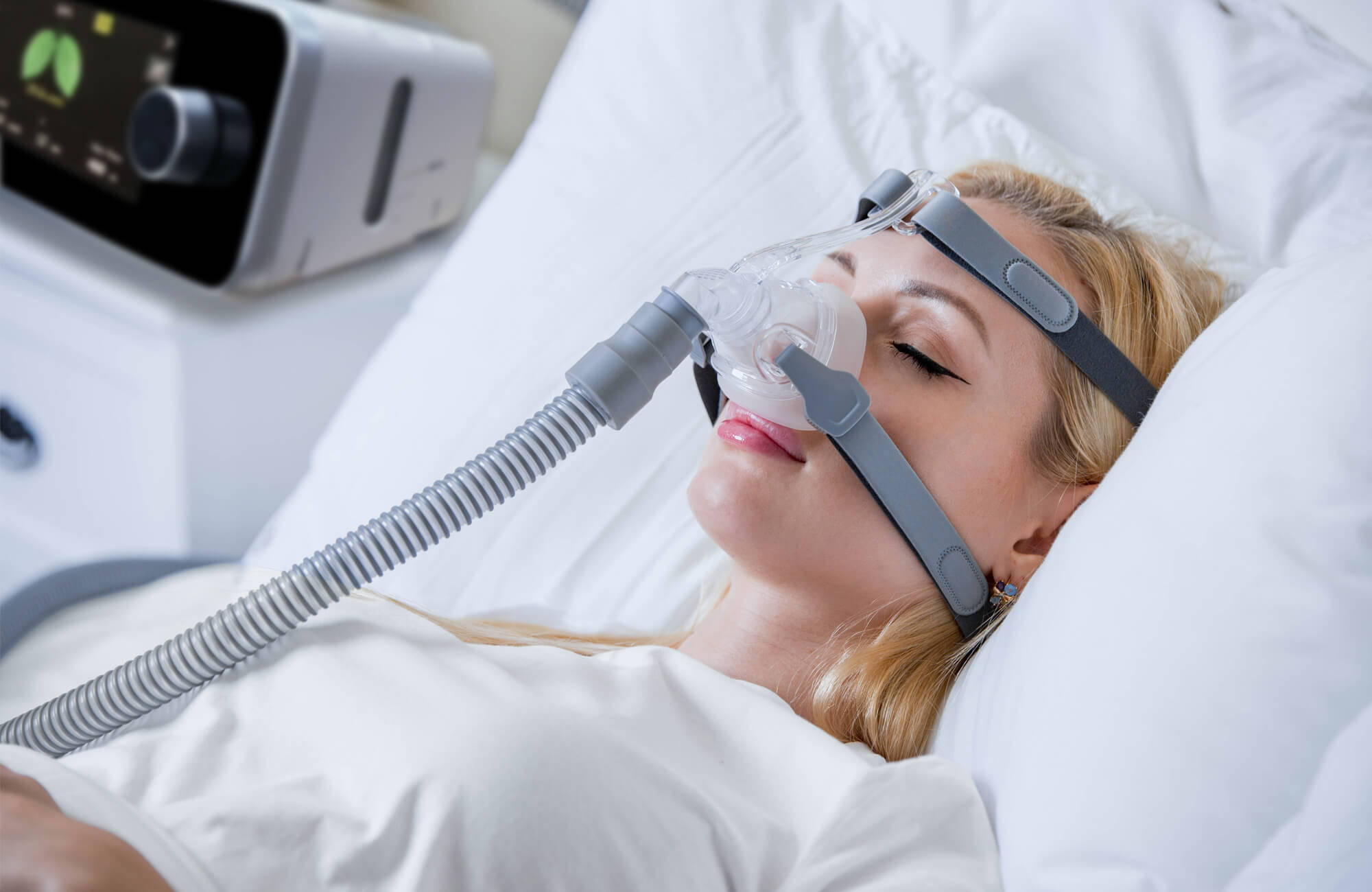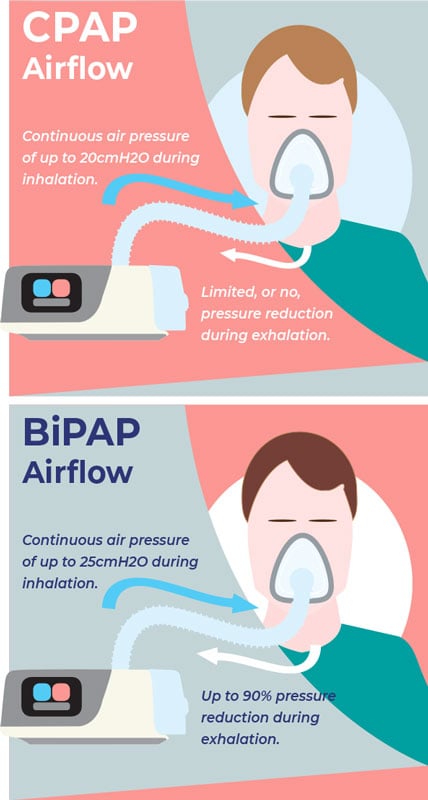Leading Benefits of Selecting BiPAP Rental Over Purchase
Leading Benefits of Selecting BiPAP Rental Over Purchase
Blog Article
Bipap vs. CPAP: Which Is the most effective for Your Rest Problem?
When navigating the complexities of rest conditions, the selection between BiPAP and CPAP therapy is an important factor to consider. Each technique uses special benefits tailored to particular problems, yet the decision hinges on individual client demands and comfort degrees. While CPAP supplies a consistent air flow appropriate for obstructive sleep apnea, BiPAP's dual stress settings may enhance convenience for those with more elaborate respiratory concerns. Recognizing these differences can significantly influence therapy effectiveness, leaving one to contemplate which option absolutely straightens with their health and wellness needs and way of life.
Comprehending Rest Disorders
Sleep conditions incorporate an array of conditions that interrupt typical sleep patterns, affecting both the top quality and period of rest. These problems can materialize in various types, consisting of sleeping disorders, sleep apnea, narcolepsy, troubled leg disorder, and parasomnias. Each condition offers distinct obstacles, usually bring about considerable daytime fatigue, cognitive problems, and psychological disturbances.
Sleeplessness is identified by problem dropping or staying asleep, while rest apnea involves repeated interruptions in breathing throughout rest, usually leading to fragmented rest. Narcolepsy, on the other hand, is noted by excessive daytime drowsiness and abrupt sleep attacks. Agitated leg syndrome creates uncomfortable sensations in the legs, triggering an uncontrollable desire to relocate them, which can additionally hinder the capacity to go to sleep.
The influence of sleep disorders expands beyond private health, influencing general productivity, relationships, and lifestyle. Understanding the certain nature of each condition is critical for efficient medical diagnosis and treatment. As sleep wellness becomes significantly acknowledged as an important element of total health, resolving these disorders is crucial for improving both sleep high quality and day-to-day functioning.
How CPAP Works
Constant Positive Airway Stress (CPAP) therapy is regularly employed as a main treatment for obstructive rest apnea (OSA) The mechanism of CPAP entails the use of a device that supplies a consistent stream of air via a mask worn throughout rest. This air flow keeps favorable pressure in the airway, preventing the collapse or blockage of the throat that can occur during rest.
When a person takes in, the CPAP equipment provides a continuous flow of air, making certain that the air passage continues to be open - BiPAP Rental. This not just minimizes the signs and symptoms of OSA, such as snoring and disrupted rest patterns, yet additionally decreases the connected health dangers, including cardio difficulties and daytime fatigue
The stress settings on a CPAP equipment can be personalized to meet private client needs, usually established through a sleep research. Generally, CPAP treatment has actually been shown to substantially improve the quality of rest and general wellness for people experiencing from obstructive rest apnea.
How BiPAP Works
BiPAP, or Bilevel Positive Air Passage Pressure, is a customized kind of non-invasive air flow that is particularly beneficial for individuals with problems such as complex rest apnea or respiratory disorders. Unlike CPAP, which provides a continual stream of air at a single stress, BiPAP supplies two distinct stress setups: a higher inspiratory pressure for breathing and a lower expiratory stress for exhalation. This dual-pressure technique enables much easier breathing, reducing the initiative called for during exhalation.
The tool operates through a mask fitted over the nose or mouth, connected to a device that generates air stress. When the person inhales, the machine supplies the higher stress to assist with airflow, making certain that the airway stays open. Upon exhalation, the machine immediately reduces the pressure, making it extra comfy for the person to take a breath out.

Trick Distinctions In Between BiPAP and CPAP

In comparison, BiPAP (Bilevel Favorable Airway Pressure) uses 2 various pressure setups: one for inhalation and a reduced one for exhalation. This twin pressure system permits for more comfy breathing, particularly for clients that battle with breathing out versus a constant pressure. BiPAP is frequently suggested for individuals with complex sleep apnea, persistent obstructive lung illness (COPD), or those who call for extra assistance throughout sleep.
Furthermore, the complexity of BiPAP gadgets commonly results in a greater price and requires more mindful titration than CPAP. BiPAP Rental. Comprehending these key visit here distinctions can help in recognizing which gadget might be better for details sleep conditions, setting the groundwork for educated treatment choices
Choosing the Right Treatment
The choice in between BiPAP and CPAP therapy mostly hinges on the details features of the sleep condition, the individual's overall wellness, and their convenience with the tool. CPAP, which provides a constant stream of air, is generally suggested for obstructive rest apnea (OSA)
On the other hand, BiPAP gives 2 levels of stress: one for inhalation and a lower one for exhalation. This dual pressure system is helpful for people with complex rest apnea or those that experience trouble breathing out versus a constant stress. Furthermore, BiPAP is often advised for individuals with respiratory conditions, such as chronic obstructive pulmonary disease (COPD), where varying stress settings can enhance comfort and conformity.
Ultimately, a complete assessment by a sleep expert, consisting of a sleep study, can help establish which treatment aligns ideal you could try this out with the person's requirements. Variables such as comfort, convenience of use, and particular medical problems should likewise be considered to enhance therapy results.
Final Thought
In recap, both BiPAP and CPAP serve distinct purposes in the administration of rest disorders. CPAP is effective for obstructive rest apnea via regular airflow, while BiPAP offers twin stress settings that improve comfort for those with complex sleep apnea or breathing problems. The choice between these therapies ought to be guided by individual requirements and problems, necessitating an extensive evaluation by a sleep expert to make certain optimal treatment outcomes and boosted quality of rest.

In general, CPAP therapy has been shown to significantly boost the quality of rest and overall wellness for people suffering from obstructive rest apnea.
BiPAP is commonly advised for individuals with intricate rest apnea, persistent obstructive pulmonary illness (COPD), or those that call for extra support throughout sleep.
CPAP is efficient for obstructive sleep apnea through regular airflow, while BiPAP supplies twin stress settings that improve convenience for those with complicated rest apnea or respiratory problems.
Report this page